Dual Frame
Two years after the presentation of the famous orbital wheel, the hubless wheel, Franco Sbarro unveils the Helios program and the Dual Frame chassis concept.
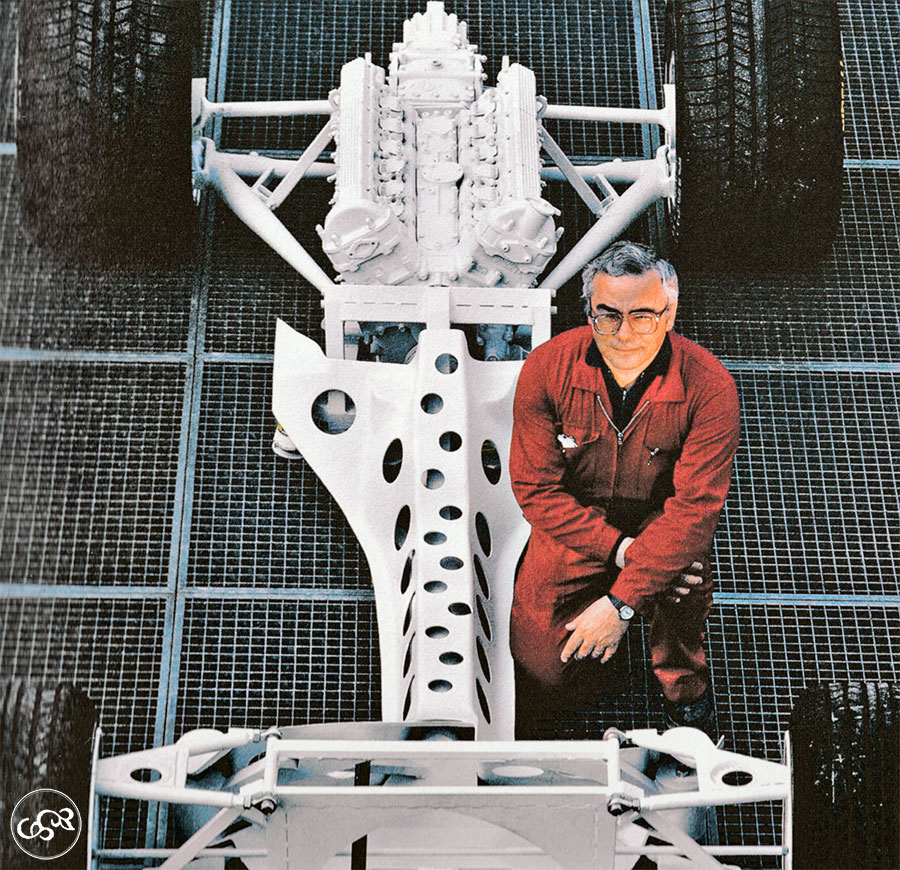
The Dual Frame principle
The idea is to separate "structural dynamic
functions from structural protection and comfort functions".
In practice, this means dividing a car into two distinct
parts:
A mechanical part (module 1, known as active safety)
comprising the mechanics and the rolling structure. An
engine-gearbox assembly, attached to a central-beam chassis,
which includes all suspension components, guaranteeing
rigidity and precision;
a trim section (passive safety module 2) corresponding to the
bodywork, made of composite materials, and the passenger
compartment. Between the two modules are pneumatic spheres,
comparable to double-acting cylinders. These spheres inflate
and deflate according to road conditions or driving style.
Thanks to this pneumatic system, the ride height can be varied
to eliminate pitching under acceleration, diving under braking
and rolling when cornering.
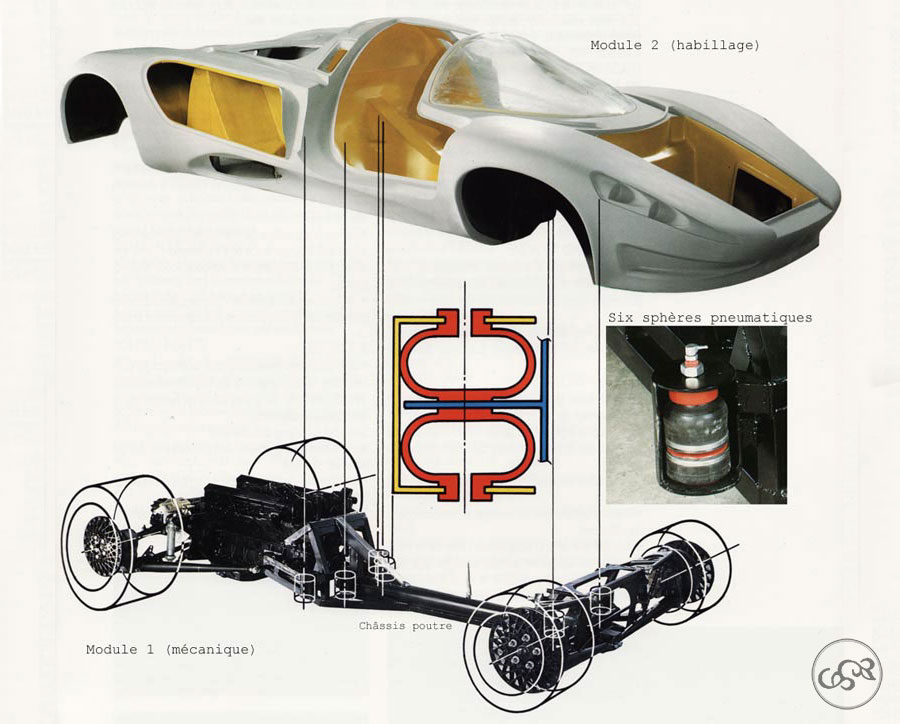
The benefits of Dual Frame
First of all, weight savings: fewer
mechanical elements are needed for the "suspension", and the
composite hull is lighter than conventional materials. Of
course, this weight saving does not come at the expense of
safety, nor does it lead to cost price inflation. The weight
of a complete car equipped with the Dual Frame system varies
from 800 to 1150 kg, depending on the level of equipment
chosen. By way of comparison, a Ferrari 599 GTB Fiorano
officially weighs 1700 kg: that says it all!
Handling is progressive. As we have seen, the pneumatic
spheres adapt the car to the driving style (sporty, comfort)
and the road (low position on circuits or freeways, high
position on rough roads, plus all the intermediaries between
these two situations).
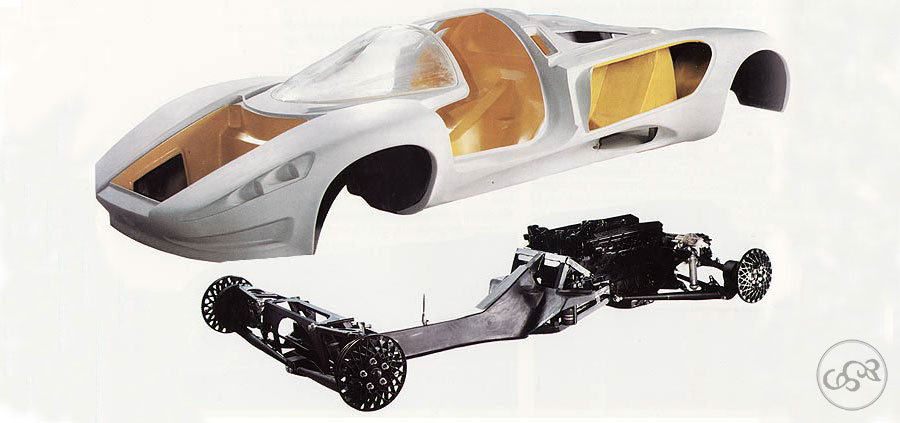
What future for Dual Frame?
Franco Sbarro naturally used the Dual Frame on numerous prototypes, including the two Sbarro Helios, the first cars to be equipped with it. Students at the Sbarro schools also used the Dual Frame for their various projects: proof that this system can be easily exploited. It was to be hoped that this ingenious system, which met the expectations of carmakers, would soon find its way to the general public. But the automotive industry was not interested: only the customers of Franco Sbarro and his students made use of the Dual Frame, which seems to me to be a great pity.
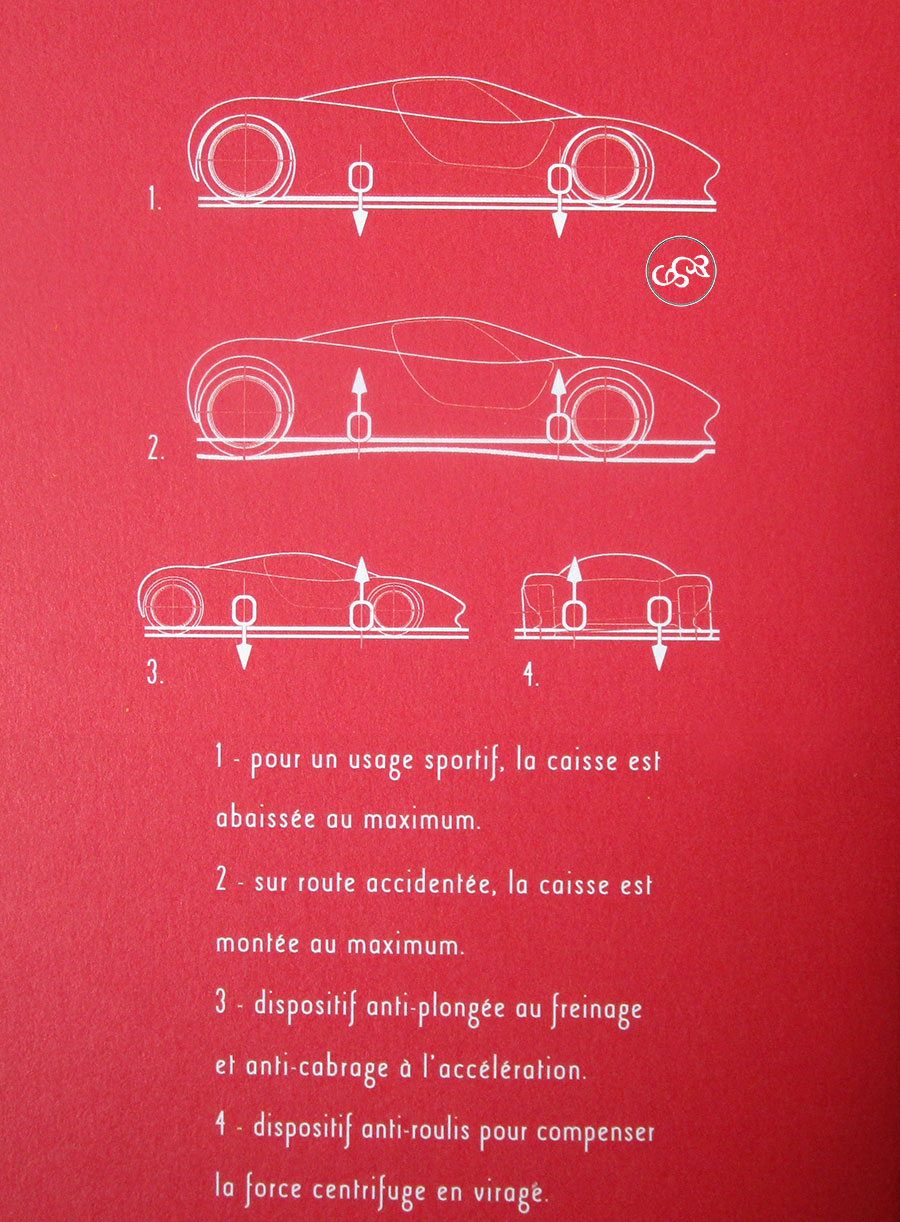
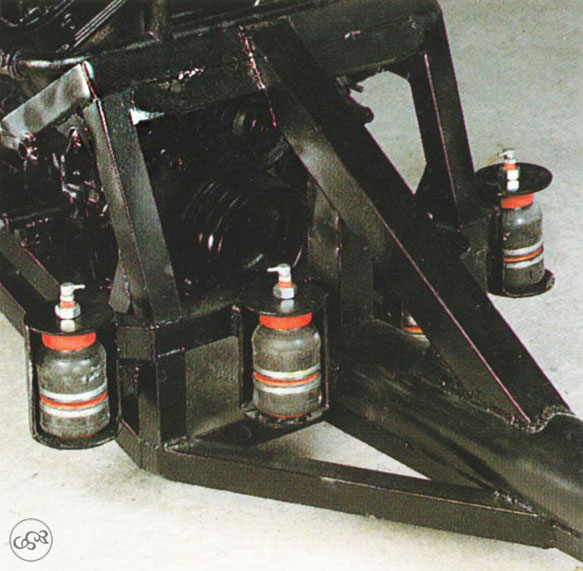
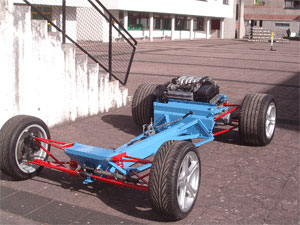
In brief
1- New chassis concept
2- Chassis in two separate parts
3- Chassis used notably on Espera prototypes